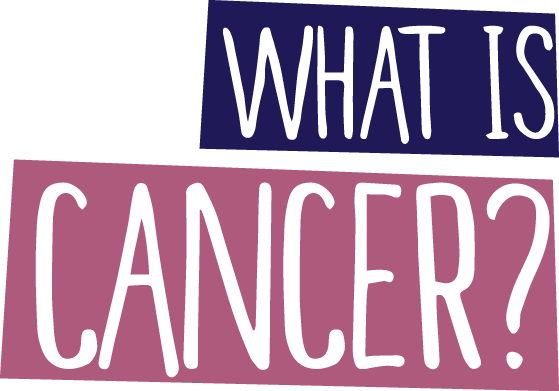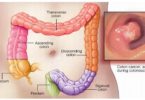What's in this article?
What is Cancer?
Cancer can start any place in the body. It starts when cells grow out of control and crowd out normal cells. This makes it hard for the body to work the way it should.
Cancer can be treated very well for many people. In fact, more people than ever before lead full lives after cancer treatment.
Here we will explain what cancer is and how it’s treated. You’ll find a list of words about cancer and what they mean at the end of this booklet.
Cancer basics
Cancer is not just one disease.
There are many types of cancer. It’s not just one disease. Cancer can start in the lungs, the breast, the colon, or even in the blood. Cancers are alike in some ways, but they are different in the ways they grow and spread.
How Cancer starts?
Cell changes and cancer
All cancers begin in cells. Our bodies are made up of more than a hundred million million (100,000,000,000,000) cells. Cancer starts with changes in one cell or a small group of cells.
Usually we have just the right number of each type of cell. This is because cells produce signals to control how much and how often the cells divide. If any of these signals are faulty or missing, cells may start to grow and multiply too much and form a lump called a tumour. Where the cancer starts is called the primary tumour.
Some types of cancer, called leukemia, start from blood cells. They don’t form solid tumours. Instead, the cancer cells build up in the blood and sometimes the bone marrow.
For a cancer to start, certain changes take place within the genes of a cell or a group of cells.
Genes and cell division
Different types of cells in the body do different jobs, but they are basically similar. They all have a control centre called a nucleus. Inside the nucleus are chromosomes made up of long strings of DNA (deoxyribonucleic acid). DNA contains thousands of genes, which are coded messages that tell the cell how to behave.
Each gene is an instruction that tells the cell to make something. This could be a protein, or a different type of molecule called RNA. Together, proteins and RNA control the cell. They decide what sort of cell it will be, what it does, when it will divide, and when it will die.
Gene changes within cells (mutations)
Normally genes make sure that cells grow and reproduce in an orderly and controlled way. They make sure that more cells are produced as they are needed to keep the body healthy.
Sometimes a change happens in the genes when a cell divides. The change is called a mutation. It means that a gene has been damaged or lost or copied twice. Mutations can happen by chance when a cell is dividing. Some mutations mean that the cell no longer understands its instructions and starts to grow out of control. There have to be about half a dozen different mutations before a normal cell turns into a cancer cell.
Mutations in particular genes may mean that too many proteins are produced that trigger a cell to divide. Or proteins that normally tell a cell to stop dividing may not be produced. Abnormal proteins may be produced that work differently to normal.
It can take many years for a damaged cell to divide and grow and form a tumour big enough to cause symptoms or show up on a scan.
How mutations happen
Mutations can happen by chance when a cell is dividing. They can also be caused by the processes of life inside the cell. Or they can be caused by things coming from outside the body, such as the chemicals in tobacco smoke. And some people can inherit faults in particular genes that make them more likely to develop a cancer.
Some genes get damaged every day and cells are very good at repairing them. But over time, the damage may build up. And once cells start growing too fast, they are more likely to pick up further mutations and less likely to be able to repair the damaged genes.
Types of cancer
Doctors divide cancer into types based on where it began. Four main types of cancer are:
- Carcinomas. A carcinoma begins in the skin or the tissue that covers the surface of internal organs and glands. Carcinomas usually form solid tumors. They are the most common type of cancer. Examples of carcinomas include prostate cancer, breast cancer, lung cancer, and colorectal cancer.
- Sarcomas. A sarcoma begins in the tissues that support and connect the body. A sarcoma can develop in fat, muscles, nerves, tendons, joints, blood or lymph vessels, cartilage, or bone.
- Leukemias. Leukemia is a cancer of the blood. Leukemia begins when healthy blood cells change and grow uncontrollably. The four main types of leukemia are acute lymphocytic leukemia, chronic lymphocytic leukemia, acute myeloid leukemia, and chronic myeloid leukemia.
- Lymphomas. Lymphoma is a cancer that begins in the lymphatic system. The lymphatic system is a network of vessels and glands that help fight infection. There are two main types of lymphomas: Hodgkin lymphoma and non-Hodgkin lymphoma.
There are many other types of cancer. You can learn more about these other types of cancer.
How Cancer spreads
As a cancerous tumor grows, the bloodstream or lymphatic system may carry cancer cells to other parts of the body. During this process, known as metastasis, the cancer cells grow and may develop into new tumors.
One of the first places a cancer often spreads is to the lymph nodes. Lymph nodes are tiny, bean-shaped organs that help fight infection. They are located in clusters in different parts of the body, such as the neck, groin area, and under the arms.
Cancer may also spread through the bloodstream to distant parts of the body. These parts may include the bones, liver, lungs, or brain. Even if the cancer spreads, it is still named for the area where it began. For example, if breast cancer spreads to the lungs, it is called metastatic breast cancer, not lung cancer.
Causes of cancer
Cancer is ultimately the result of cells that uncontrollably grow and do not die. Normal cells in the body follow an orderly path of growth, division, and death. Programmed cell death is called apoptosis, and when this process breaks down, cancer begins to form. Unlike regular cells, cancer cells do not experience programmatic death and instead continue to grow and divide. This leads to a mass of abnormal cells that grows out of control.
What are the most common forms of Cancer?
Cancer can occur anywhere in the body. In women, breast cancer is most common. In men, it’s prostate cancer. Lung cancer and colorectal cancer affect both men and women in high numbers.
There are five main categories of cancer:
- Carcinomas begin in the skin or tissues that line the internal organs.
- Sarcomas develop in the bone, cartilage, fat, muscle or other connective tissues.
- Leukemia begins in the blood and bone marrow.
- Lymphomas start in the immune system.
- Central nervous system cancers develop in the brain and spinal cord.
How is Cancer treated?
Treatment options depend on the type of cancer, its stage, if the cancer has spread and your general health. The goal of treatment is to kill as many cancerous cells while minimizing damage to normal cells nearby. Advances in technology make this possible.
The three main treatments are:
- Surgery: directly removing the tumor
- Chemotherapy: using chemicals to kill cancer cells
- Radiation therapy: using X-rays to kill cancer cells
The same cancer type in one individual is very different from that cancer in another individual. Within a single type of cancer, such as breast cancer, researchers are discovering subtypes that each requires a different treatment approach.






[…] Cancer starts when cells in the body begin to grow out of control. Cells in nearly any part of the body can become cancer, and can spread to other areas of the body. To learn more about how cancers start and spread, see What is Cancer? […]